Latham's Snipe Project
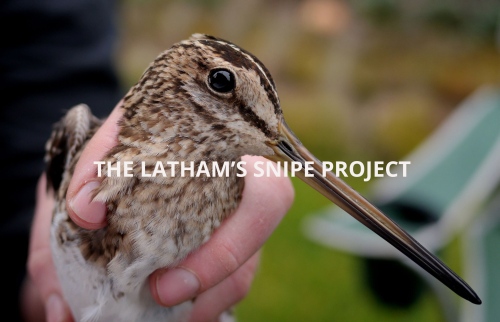
The Latham’s Snipe Project was initiated to improve our understanding of migration and habitat use by Latham’s Snipe.
October – November 2025, monitoring of Latham’s Snipe carried out across two major Latham’s Snipe populations; Peterborough, Victoria, and Robe, South-eastern South Australia. Monitoring involved the use of 30 global positioning system (GPS) Bluetooth transmitters which had the capacity to track total of 40 tagged snipe.
Information collected so far reveals nightly movement between small wetlands within towns and farmlands with some movements up to 10km.
This research is being led by Dr Birgita Hanson, Federation University and funded under the Commonwealth’s Department of Climate Change, Energy, the Environment and Water (DCCEEW) under the Renewables Environmental Research Initiative (RERI).
A research project focusing on wetland restoration and Latham’s Snipe population dynamics commenced in 2025 in Tasmania’s Central Plateau at Silver Plains. The area is managed by the Tasmanian Land Conservancy and supports a significant highland population of Latham’s Snipe.
Latham’s Snipe Gallinago hardwickii, also known as Japanese Snipe, is a medium-sized (150-200g) migratory shorebird that breeds in Japan and south-east Siberia. Most of the population spends its non-breeding season in eastern Australia from August to February, with the largest concentrations occurring in south-eastern Australia.
Latham’s Snipe is a shy, secretive bird that is generally widely dispersed in low numbers across wetland and grassland areas. They differ to other shorebird species in preferring open freshwater or brackish wetlands with cover nearby, particularly areas of wet tussock grassland and other dense ground vegetation. During the day snipe prefer to roost in grass and weeds in close proximity to water and at night they disperse to feed in nearby wet paddocks, ditches and other open flooded areas. The distance they move nightly to feed is unknown; however, shorebirds tend to roost in close proximity to their feeding habitats in order to reduce the amount of energy used in nightly transit. Therefore, the distance between snipe roosting and optimal feeding habitats is likely to minimal in order to reduce flight times and so, conserve energy.
Latham’s Snipe is one of 37 migratory shorebirds that occur in Australia and is listed as such under the Environment Protection and Biodiversity Conservation Act 1999 (EPBC Act). Listed Migratory Species. Important habitat for Latham’s Snipe is considered to occur when the site supports 18 or more individuals of the species.
Under the Ramsar convention, one of the criteria for wetlands of international importance is that they hold 1% or more of the global population of a species. There are a handful of sites in Australia that have documented counts of snipe greater than 1% ( which is 360 birds), including Belmont Common (Victoria), Macksville (NSW), Cedar Hill / Hexham swamp (NSW) and Powling Street wetlands (Victoria). Powling Street wetlands has had records of up to 430 birds, with regular counts showing a non-breeding population size of between 50 and 300 birds. It thus qualifies as a nationally and internationally important site for snipe.
Latham’s Snipe is listed under the Japan-Australia Migratory Bird Agreement (JAMBA) and threats to the species in one country will have implications for species management in the other. Across their trans-equatorial range, the species is thought to rely on a network of habitat types including wetlands and meadowlands in agricultural and urban areas. Declines in the snipe population have been documented in Japan and ongoing loss of wetlands in its non-breeding areas, caused by drainage and conversion to farmland, may be exacerbating this trend.
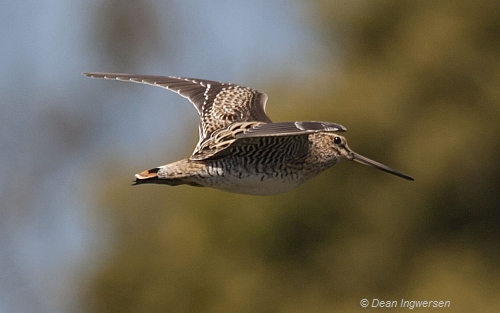
In Australia, Latham’s Snipe were hunted until the late 70s – early 80s, when hunting bans were introduced. The major current threats to snipe in both Australia and Japan is the loss of habitat (particularly wetlands). Latham’s snipe are declining in Japan and are also thought to be declining in Australia.
Critical habitat for mobile fauna like waterbirds is often scattered across a landscape (e.g. swamps and paddocks for feeding, meadowlands for breeding). In Australia, many wetlands and other critical habitats occur on private land and are infrequently managed for conservation purposes. This poses a significant management challenge as habitat conservation relies on the good will of the land holder. This is even more challenging for habitat occurring in urban areas, where there are often a variety of land tenures and competing interests for residential and industrial development.
A case in point is the population at Powling Street wetlands in Port Fairy, Victoria. This population is threatened by a housing development currently under construction on an ephemeral portion of the wetland complex. As significant numbers of snipe occur in urban wetlands along other parts of the south-west Victorian coast (e.g. Peterborough), a similar fate may await these populations as coastal development continues to expand.
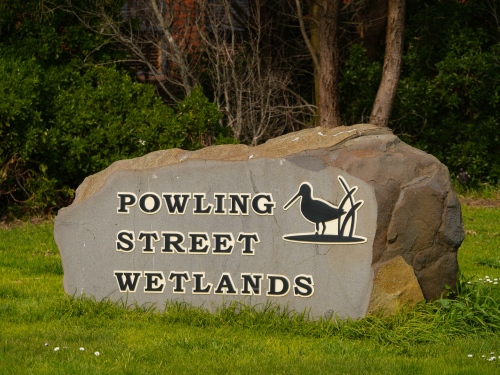
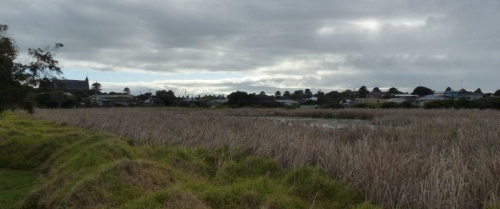
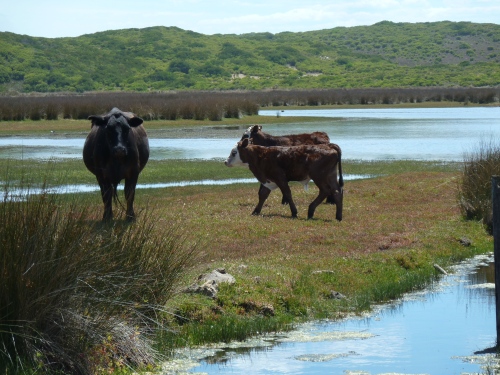
The Latham's Snipe Project background
The Latham’s Snipe Project was established to improve our understanding of the ecology of Latham’s snipe Gallinago hardwickii and critical habitats used by the species throughout its life cycle.
The project originated from a Victorian Civil and Administrative Tribunal (VCAT) case concerning the Powling Street wetlands in Port Fairy, south-west Victoria. Powling Street wetlands is one of the most important sites for snipe in south-eastern Australia. A housing development was proposed for a portion of the wetland complex where snipe occur regularly.
South beach Wetlands and Landcare Group was opposing the development on the grounds that it would impact the snipe population there. Dr Birgita Hansen at Federation University provided expert evidence in relation to the likely impact of the proposal on the species. VCAT issued a permit for the development in a reduced form, to be built on ephemeral grassy wetland areas adjacent to the main wetland.
In the wake of this case and the recognition that habitat use by snipe was poorly understood, Dr Hansen initiated a series of surveys to explore relative use of urban and non-urban wetlands by snipe. These surveys have demonstrated the importance of urban wetlands to snipe during their non-breeding season. They have also raised many questions about snipe habitat use on broader scales (including during migration) and their daily, monthly and annual movement patterns.
The Latham’s Snipe project is using a range of techniques to better understand the species including observations, habitat monitoring and mapping, geolocators and satellite tracking. The project also engages communities to try and encourage ownership and protection of the local environment that the Latham’s snipe relies on. Funding toward part of the project has been provided by the Australia Japan Foundation.
Who's involved
Project leader: Birgita Hansen
Project team: Jodie Honan, David Wilson, Richard Chamberlain, Don Stewart
Collaborators: Lori Gould, Tatsuya Ura, Takemae Asako, Hironobu Tajiri, Koyama Kazuo, Michelle Casanova, Nick Schultz, Simeon Lisovski, Inka Veltheim
Student researchers: Andrew Crossley, Daniel Sheehan
Partner Organisations:
- South Beach Wetlands and Landcare Group
- Wild Bird Society of Japan
- Japan Bird Research Association
- Woodlands and Wetlands Trust (Jerrabomberra Wetlands)
Funding bodies:
- Australia Japan Foundation
- Glenelg Hopkins Catchment Management Authority
- Department of Environment, Land, Water and Planning
- Woodlands and Wetlands Trust (Jerrabomberra Wetlands)
Project objectives
In order to conserve Latham’s Snipe in multi-use landscapes, we need to identify critical areas that support birds during different stages of their life cycle and understand the key characteristics that define these areas.
This project is using a combination of animal tracking technology, field observations and systematic surveys to determine habitat preferences and movement patterns of Latham’s Snipe, both in Australia, Japan and on migration.
Project activity is focusing on populations in south-west Victoria, which is the species’ stronghold in Australia but has also lost over 70% of its wetlands in the last 100 years.
The Latham’s Snipe project has four key objectives:
(1) Locate representative habitats, in Japan and Australia, used by Latham’s Snipe throughout their annual life cycle, in order to identify priority areas for conservation investment and regular monitoring.
(2) Establish and support a snipe monitoring program that targets wetlands across their Australian range and involves local communities and bird watchers.
(3) Facilitate collaborative research within and between Australia and Japan on a key species of shared interest.
(4) Apply the study findings about snipe habitat use across their range, to build understanding and appreciation of habitat management issues among communities and management agencies.
Tracking and snipe capture
At Port Fairy, 15 years of monitoring by South Beach Wetlands and Landcare Group (SBWLG) has indicated that large numbers of birds (usually several hundred) return to this site annually for their non-breeding period. This provides a unique opportunity to capture birds and fit tracking devices for later retrieval. Previous studies have indicated that Latham’s Snipe are highly site faithful (i.e. they will use the same site each year on return to Australia), so there is a high likelihood these birds will be re-encountered at Port Fairy in the following year.
Funding from the Australia Japan Foundation (AJF) enabled the purchase of light-level geolocators to attach to snipe at Powling Street wetlands. Light-level geolocators by Migratetech are data logging devices that store information about day length, which can be later used to re-construct the movement pathway of the bird by calculating latitude and longitude from the day length signature. This method has been successfully employed on Great Snipe in Sweden, where they had a ~30% retrieval rate. It is also widely used in Australian wader studies and has provided valuable information on migration and breeding of species like Ruddy Turnstone and Sanderling. http://www.waderstudygroup.org/article/1839/.
Catching of birds commenced at Powling Street wetlands in September 2015. Birds were captured using mist nets placed through the wetland and adjacent grasslands. Birds were caught prior to dawn when returning to the wetland from their overnight foraging. In total, 14 birds were captured this way and fitted with geolocators. These were mounted on orange plastic ‘leg flags’ and attached to the upper leg. An orange engraved leg flag with a unique alpha-numeric combination was attached to the opposite leg to facilitate field identification of individual marked birds.
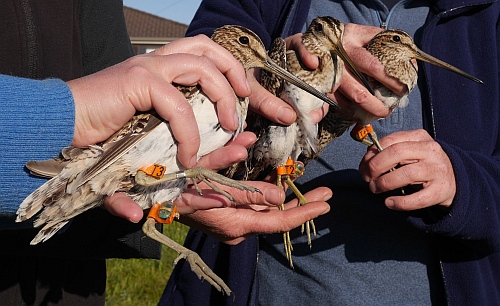
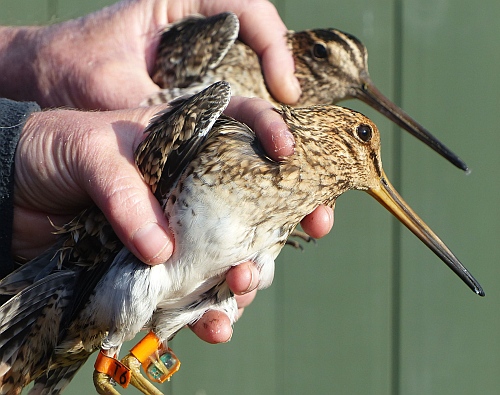
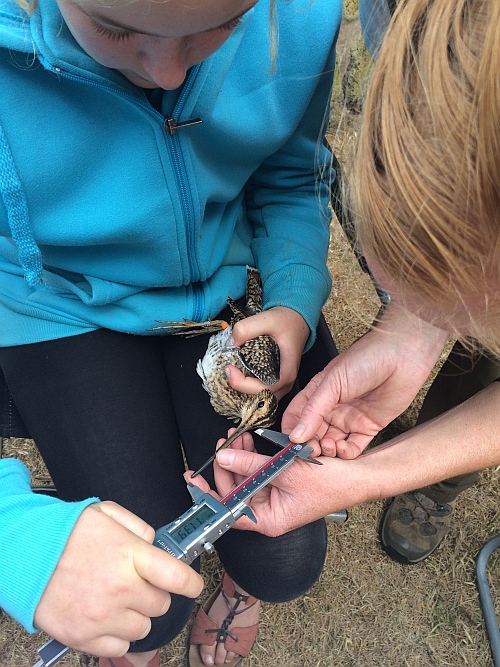
Previous updates
Latham’s Snipe counts 2015
Between October 2014 and February 2015, a series of monthly surveys was conducted in the Port Fairy – Warrnambool – Peterborough area (south-west Victoria). Small teams of volunteers counted different wetland sites on the same day – the sites were chosen on the basis that they either regularly supported snipe, had previously supported snipe (in the days when hunting was still allowed) or that they might support snipe. These surveys were repeated in September and November 2015, and January 2016. Surveys were conducted by one or two observers walking a transect through the wetland and counting birds as they flushed from the vegetation.
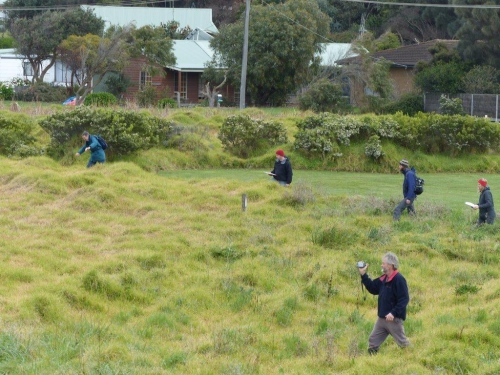
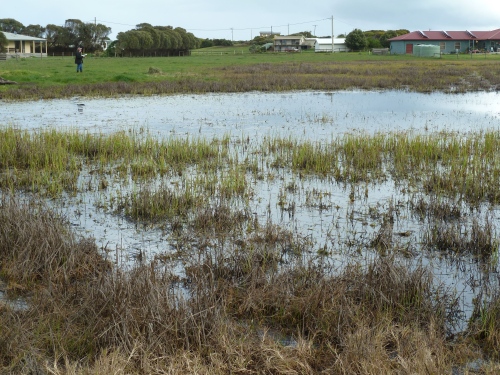
A maximum of 15 wetlands were counted on any survey day. Around half of these wetlands occurred within township areas or on the township fringe (designated ‘urban’ wetlands) and the remainder occurred out in agricultural and nature reserve areas (designated ‘rural’). In addition, a number of sites in other areas were also counted during the November 2015 (Geelong / Bellarine, East Gippsland, south-east Melbourne and south-east South Australia) and January 2016 (as above plus Canberra and southern Tasmania) surveys. These counts herald the first attempts to establish south-eastern Australian snipe counts, which are aimed at counting snipe wetlands across the region on a single day, in order to determine relative abundance.
The largest count in 2014-2015 was 348 snipe, which were collectively counted across six wetland sites during November. In 2015-2016, the relative number was much lower, with the maximum count of 334 occurring in November across 14 wetland sites.
Over 80% of snipe counted were in urban wetlands. In south-west Victoria this figure is over 95% - only seven records, over five different months, were obtained from rural wetlands, and these were only from Killarney swamp, Tower Hill and Yambuk Nature Conservation Reserve. In 2014-2015, the lowest count of snipe at Powling Street wetlands was in December (23 birds) and the highest was in October (133 birds). Urban wetlands in Peterborough also held substantial numbers of snipe, with a single small wetland (<0.25 ha) having 169 birds during the November 2014 count. In 2015-2016, counts at Powling Street were much lower (range 1-34), as were counts in Peterborough (range 38-116). This may reflect the much drier conditions across southern Australia in 2015-2016 compared with the previous year. Bureau of Meteorology Annual Climate Report 2015.
It is clear from the surveys conducted so far that urban wetlands are very important for snipe during the day. What is also clear is that climate (weather) had a strong influence on bird numbers, with far fewer snipe being encountered during the 2015-2016 spring-summer season that the previous year. What we don’t know is where the birds go during the night, and the relative importance of other wetland or ‘wet’ habitats in the region for night time foraging. Addressing these knowledge gaps are the goals of future surveys and tracking.
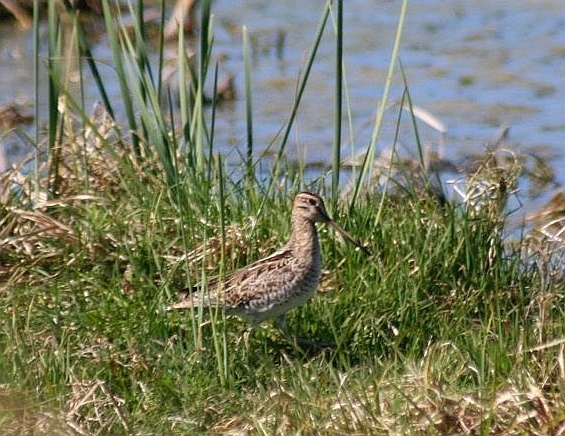
Latham's Snipe recapture 2015
First complete migration data record 2015
The first Latham’s Snipe T0 with geolocator has been recaptured at Port Fairy.
The bird, first captured on October 1, 2015, was re-captured on Sunday morning October 9 2016 only a few hundred metres from its original capture site over 12 months previously! The geolocator appeared in good condition and the bird was in good health.
A full migration track for the snipe was obtained (see map below).
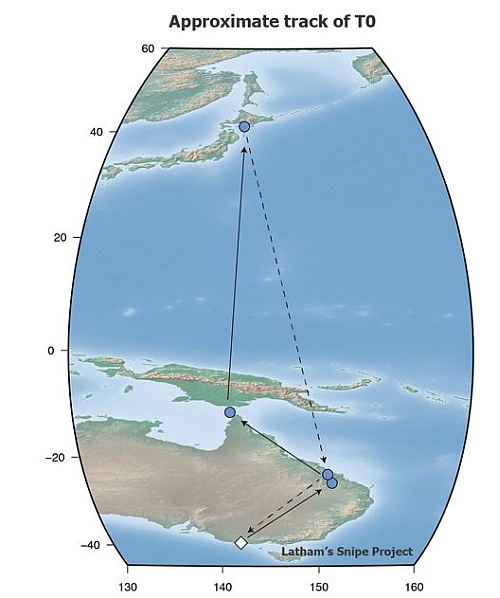
T0 left Port Fairy in February 2016 and spent about 2 months in SE Queensland before flying to Cape York (or somewhere in the region) in April. From there the bird flew direct to Hokkaido and arrived around early May. The bird may have incubated a clutch whilst on the breeding grounds somewhere in southern Hokkaido, over May-June. In late August it flew direct from Hokkaido back to SE Queensland in 3 days, where it spent about a month presumably staging before returning to Port Fairy on September 26 2016.
This is the first time a migration track has been obtained in this manner from Latham’s Snipe. This capture confirms what we had suspected, that some snipe return to Powling Street wetlands in Port Fairy each year. We are therefore hopeful we may recapture another of our birds.
Birgita thanks the extremely hard work and dedication of her team in Port Fairy and helpers on catches over the last 13 months, which has made it possible to do this project. And thanks to the VWSG for supporting the project and the Australia Japan Foundation for funding to cover geolocators and our visit to Japan.
Update 2016
In the September 2016, the team will once again attempt catching of snipe in Port Fairy with a view to deploying more geolocators as well as attempting to re-capture birds caught in the 2015-2016 spring-summer season.
Second complete migration data record 2018
The project now has information from the second complete migration data record, detailing a Latham’s Snipe (bird identified as P3) migratory journey from Australia to the Northern Hemisphere and return during 2018.
‘P3’, departed the Australian Capital Territory on 4 February 2018, it stopped somewhere in south-east Queensland on 17 February and resumed its northward migration on 15 April 2018. It arrived at the breeding grounds on 28 April and spent the breeding season in either the very north of Hokkaido or southern Sakhalin, Russia until early August. On the 6th August 2018 it commenced its return journey to Australia via central Honshu (Japan) and possibly even Papua New Guinea. ‘P3’ arrived back in the ACT on 27 September 2018, it was recaptured at wetlands in Canberra after travelling a round journey of approximately 19,000 km.
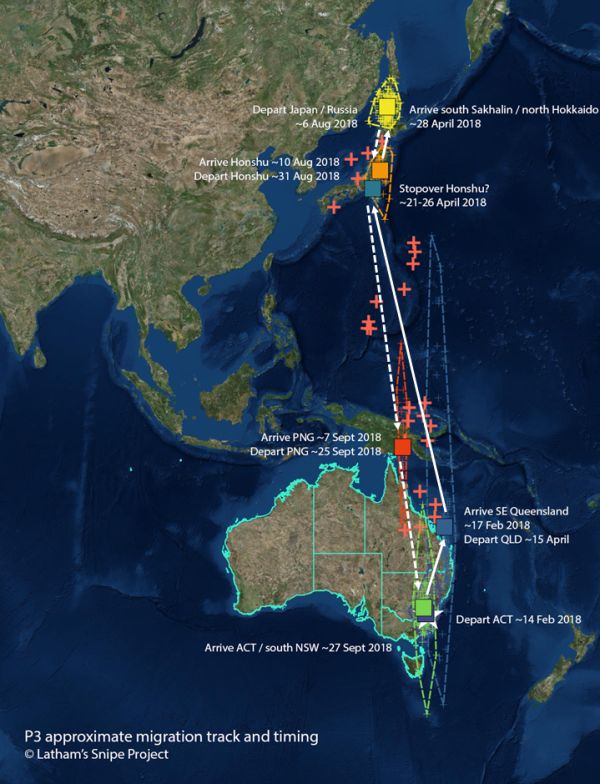 Migration of Latham's Snipe (P3) in 2018.
Migration of Latham's Snipe (P3) in 2018.
Update on 2017-2018 Latham’s Snipe season
The Latham's Snipe Project has had a super busy season just past and had some great results as well as some frustrating ones. Our biggest disappointment was the retrieval of a second geolocator whose battery had failed prior to the bird's migration in February (2017). This was the only other geolocator from a previous season retrieved. However, this was counter-balanced by another great season fo radio tracking around Port Fairy, a new program of radio tracking started at Jerrabomberra Wetlands in Canberra, and some outstanding count results.
Over the three count periods (September, November and January) we had 585, 1459 and 916 birds counted, respectively. These counts came from over 100 sites with many people kindly volunteering their time to assist. We were really thrilled with this outcome and it bodes well for future surveys, which we will continue in 2018-2019. We'd like to thank everyone who has participated in counts, catching or even helping with tedious tasks like data entry. The project would suffer immensely without this fantastic effort from everyone.
The count dates for 2018-2019 will be September 15, November 10 and January 12. If you are interested in being involved or want to know more about the project, please contact Birgita b.hansen@federation.edu.au or check out the website news updates https://lathamssnipeproject.wordpress.com/news/
January 2020 - satellite transmitters fitted to 3 Latham’s Snipe
Three Latham’s Snipe were fitted with PinPoint Argos 75 satellite transmitters in early January 2020 at a wetland in Canberra, ACT. The tags collect location data using global positioning system (GPS) and are pre-programmed to collect GPS positions at different frequencies throughout the period of the bird’s northern migration. By mid-January one of the transmitters lost signal but the remaining two transmitters indicated the birds remained in the Canberra area until the end of January, at which time they started their northern migration. By Mid-February one of the snipe was detected using small farm dams in the region north west of Newcastle; and the other was in Gwydir wetlands in northern NSW.
2020 spring snipe season
It has been an interesting time for the Latham’s Snipe Project and its collaborators in Japan, the Wild Bird Society of Japan. In May 2020, the WBSJ surveyed a sub-sample of their core breeding sites in Hokkaido and found an alarming decline in the number of snipe – they documented a decline of over 40% when comparing the numbers against the last breeding grounds surveys in 2018. The WBSJ attributed this decline to the drought and bushfires in Australia over our summer.
Back in Australia, the snipe counters headed out to their regular sites on September 26 for the first of the national surveys (for those that could during covid-19 restrictions). Early data is suggesting no major change in the numbers of snipe at regular sites. So it is uncertain at this stage whether the decline in Hokkaido will be reflected in major changes to the snipe population in SE Australia over the 2020-2021 season.
The WBSJ were also busy during their snipe season deploying some more satellite tags in Hokkaido. Two of those birds are still transmitting and have commenced their southward migration across the Pacific Ocean, see: https://www.facebook.com/wbsjoojishigi/ We have our fingers crossed that these two birds make landfall safely and soon.
Back in January in Australia, the Lathan’s Snipe Project deployed three satellite tags at Jerrabomberra wetlands in Canberra. Only one of those tagged birds was still transmitting by the time it left Australia, and this bird spent around 2 and a half weeks in the highlands of Papua New Guinea. This, combined with some of the previous migration tracks obtained, provides solid evidence of the importance of PNG to migrating Latham’s Snipe. This will be the subject of a presentation for the International Shorebird Twitter Conference on October 7, see: https://www.bou.org.uk/conference/istc20/
Finally, outside the national surveys, new snipe records continue to come in, providing new information about the species distribution. This includes a large recent record of snipe from private property in central Tasmania, and a significant record from Craigieburn wetlands. If you have snipe sightings you would like to share, or would like to find out more about the national surveys, please contact Birgita mailto:b.hansen@federation.edu.au or check the Latham’s Snipe Project website https://lathamssnipeproject.wordpress.com/
Guidelines for restoring and managing wetland habitat for Latham’s Snipe
Hansen B, Walters J, Akers R. (2024) Guidelines for restoring and managing wetland habitat for Latham’s Snipe. Unpublished report produced by the Latham’s Snipe Project. DOI:
10.25955/28139495
The guidelines contain information for managing and reinstating wetland habitat for Latham’s Snipe. It is intended for use by land managers such as Natural Resource Management (NRM) bodies, practitioners. The Guidelines contain 11 Key management actions.
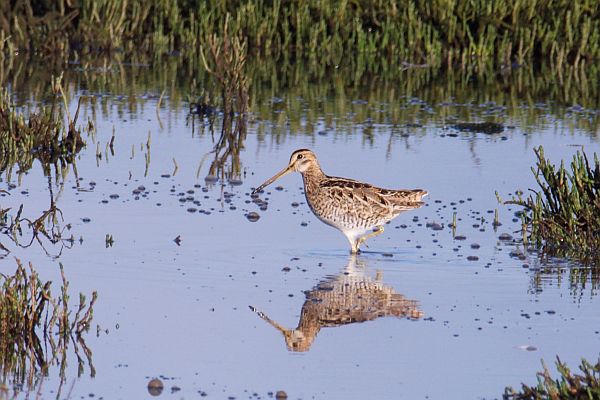
A snipe at one of Australia’s Nationally Important Sites for snipe in Smithton, northern Tasmania in September 2020. Photo courtesy of Jenny Ostenfeld.
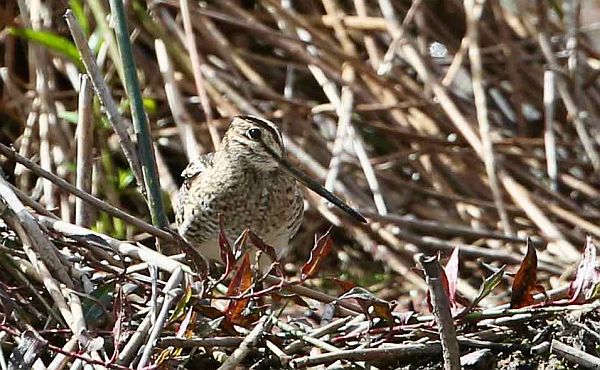
Snipe at Byron wetlands in August 2020. Photo courtesy of John Hutchison
Project contact
Dr Birgita Hansen
Email: Dr Birgita Hansen
Centre for eResearch and Digital Innovation
Suite 15 Greenhill Enterprise Centre
Federation University Australia, Mount Helen
PO Box 691 Ballarat Vic 3353
Links
Guidelines for restoring and managing wetland habitat for Latham’s Snipe
Latham's Snipe project on wordpress
The Australia-Japan Foundation (AJF)

